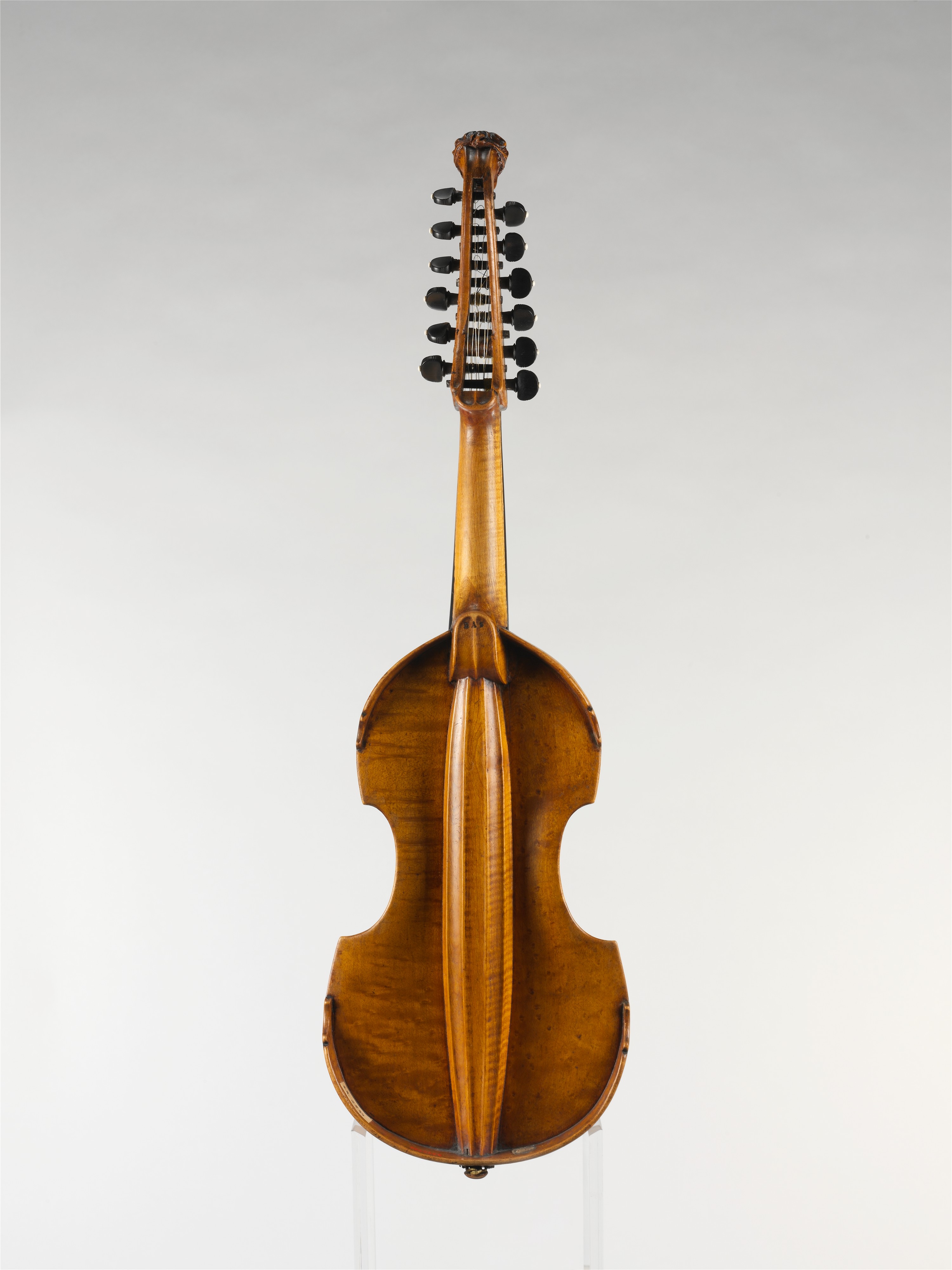Mute Viola d'Amore
Daniel Achatius Stadlmann Austrian
The viola d'amore, or viola "of love," is a bowed stringed instrument which gained great popularity in the eighteenth century. Much of its history, including the derivation of its name, is unknown. It has many characteristics of the viol family such as a flat back, ribs that are flush with the top and back, and a rosette in addition to soundholes. Yet, like a violin, it is unfretted and held under the chin while played. Violas d'amore typically have seven playing strings, though instruments with other numbers of strings are not unusual. Perhaps the most distinguishable characteristic of the eighteenth-century viola d'amore is the presence of sympathetic strings, which are not played but located behind the bowed strings and vibrate "in sympathy." The sympathetic strings contribute to produce a tone that is clear and often described as "silvery," as well as creating a more resonant sound with a longer decay. Sympathetic strings are found on several European folk instruments, including the Swedish nyckelharpa and the Norwegian hardanger fiddle. They are prevalent on stringed instruments from India, most notably the sitar. The viola d'amore was popular with eighteenth-century composers and can be found in the works of J. S. Bach, Vivaldi, Telemann, Haydn, and Locatelli.
The very small, shallow body of this viola d’amore gives it a quiet, lean sound. Mute violin-family instruments were generally used for practice in environments where a conventional instrument was too loud. This instrument’s scroll takes the typical form of a blindfolded cupid, representing the notion that "love is blind."
Description: mute violino d'amore (pochette) with six strings to bow and six sympathetic strings. The inscriptions are the following: A brand stamp of the maker is to be found on the heel: "D A S", which probably stands for Daniel Achatius Stadlmann (1690-1744, Vienna). On the lower inner side there is the number: "228/ 27" written three times with red ink, black ink, and on a label. It appears to be an inventory number from the end of the 19th century. While the entire neck is that of a regular but very small viola d'amore, the body consists only of a top in viola shape, underneath of which a sound body similar to that of a pochette is attached.
The neck is crowned with a Cupid's head. The ebony finger board, underlaid with a wedge, is apparently a later replacement, as are bridge and nut. The ebony pegs and the veneered ebony tail piece are original. The neck shows marks of scratches of unclear purpose. The top has the outline of a small viol and is made of birds eye maple, has no sound holes but a rose covering the entire body of the pochette. There is a pair of small purflings. To provide stability to the construction, the lower and upper bouts are supported by fractional small sides.
The varnish is deep yellow as is typical for Viennese bowed instruments and for Stadlmann in particular.
Due to rights restrictions, this image cannot be enlarged, viewed at full screen, or downloaded.
This artwork is meant to be viewed from right to left. Scroll left to view more.



